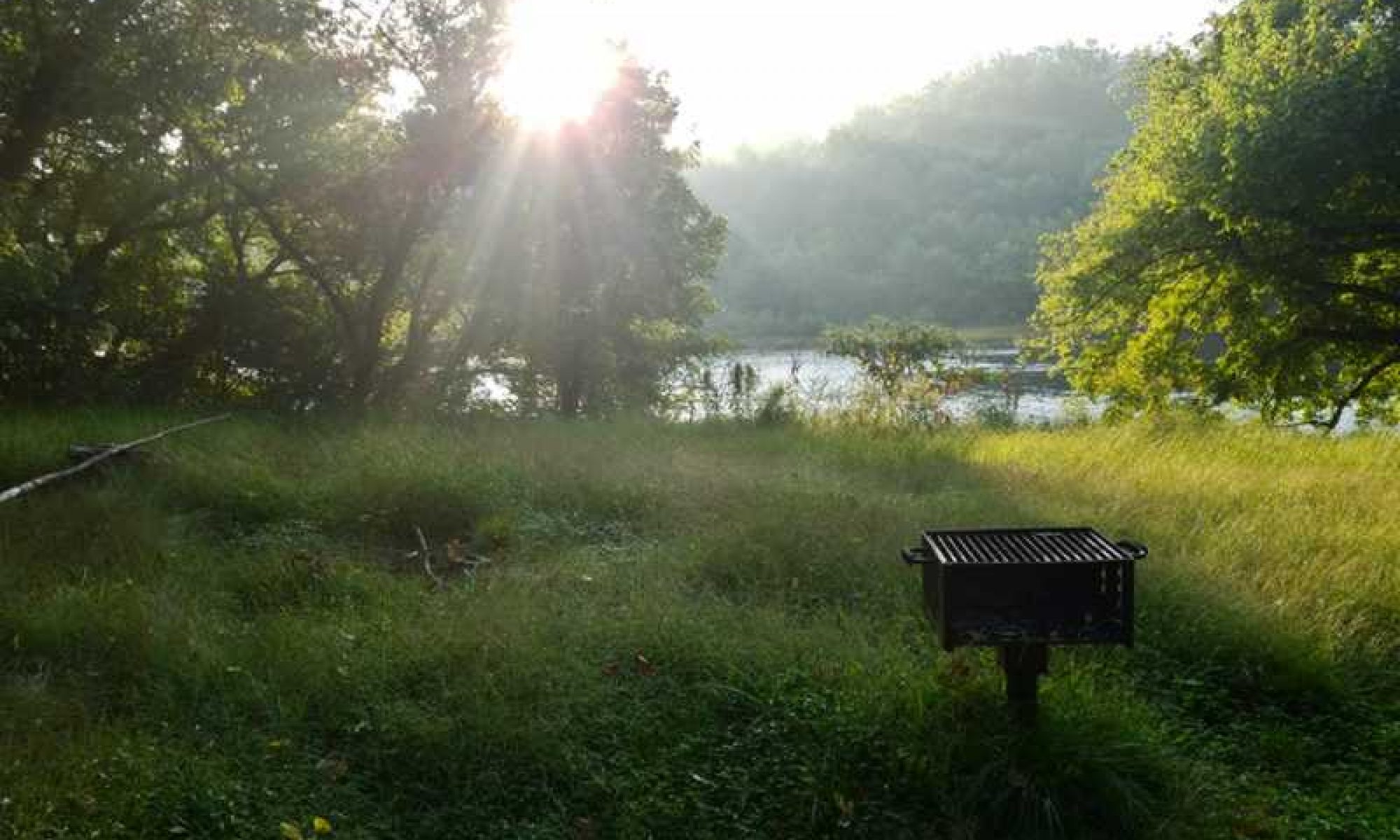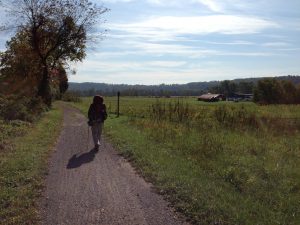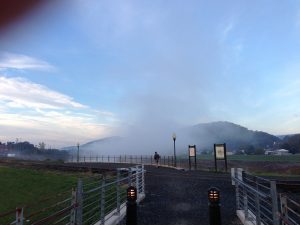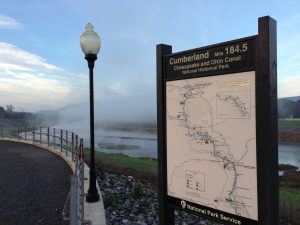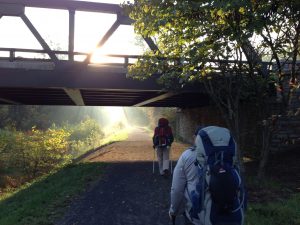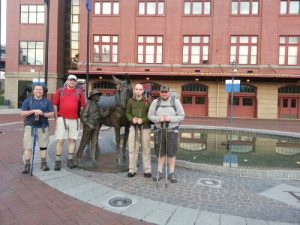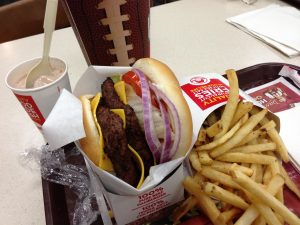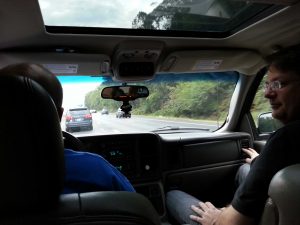First Camp
22.5 miles on day 1.
From Lunch a While Back….
A Few from this Morning…
Start
Last Night of Big Food
And so it begins…
Pack Weight
A main goal for me has been to lighten my load. My equipment purchases factor weight in first before any other consideration. Second is cost.. Then reliability.. Finally, comfort. There isn’t much room for luxury, but I do make a few exceptions. Here are my main compromises:
1. Tent. This is a big one. Literally. I am 6’4″ tall, and treasure my space. I also hate bugs, and like my privacy. No sleeping over/under tarps for me. So I’m spending weight on a larger tent than most: A Big Agnes Fly Creek UL3. Luxurious living, under 4 pounds. It’s the heaviest thing on my back.
2. Chair. This wasn’t going with me, but I made several other weight-saving strides, I feel like I’ve earned it. It’s just over a pound. An Alite Monarch chair. It will make lunches and muddy campsites much more comfortable. Another reason I have it: Reward. Most lightweight chairs specify a maximum of 250 pounds. When I started this adventure, clothing would put me over. Now I weigh considerably less. 15 pounds off my bones = 1 more pound on my back. Yay me.
3. Sleeping Bag. I could be lighter here. 2.75 pounds is a bit heavy. I got the North Face Dolomite 2S 40 degree bag. It’s long, super wide for fat people like me, it’s not mummy shaped, and can unzip to make a large blanket. It’s not down fill, so I don’t have to live in mortal fear of moisture. That, and it’s super cheap comparatively.
4. Pillows. Yes, plural. I have 2 smaller pillows, one down, and one foam. I pack them together into a stuff sack, and my head is well off the ground. It helps me get to sleep faster. 1 pound for both together.
5. Pack. My pack is a Deuter Act-Lite 65+10. It’s just under 4 pounds, and it has a nice internal frame, and is sturdy enough to carry heavy loads, yet it’s light and simple. It’s a balance. Any lighter, and it’s less support and durability. Any heavier, and it’s… heavy. Decent price, it fits me well. I like it.
What did I give up for these luxuries?
1. Camera. An extra 4 pounds for my 5D2 and 50mm 1.2 lens is just too expensive. My iPhone camera will have to do.
2. Water Filtration. I am leaving the pump at home. Chlorine Dioxide drops for me, muck strained through a rag.
3. Hydration System. I’m saving a pound by leaving the 3L platypus bladder/hose and my 2 Nalgene bottles at home. Feather-weight 32 oz. Gatorade bottles will do nicely. I also don’t have to worry about my bladder springing a leak in my pack.
4. Sleeping Pad. I originally chose a “self-inflating” foam+air pad to sleep on, but instead cut the weight down significantly by switching to a Thermarest zlite foam core pad. Less comfort, but less weight. Less cost, too.
5. Hot Food. No stove. No fuel. Lot’s of weight savings, but no hot meals.
6. Rain and Cold Protection. I have 2 sets of clothes, both the same. Nylon shorts, and a synthetic mesh shirt. While I’m walking, I’m counting on the pack weight to keep me warm. When I stop, it will be my sleeping bag and an emergency blanket/tarp. This is early October. It might be chilly. As we get closer, I may add a fleece jacket depending on the predictions. No rain gear. (for me.. The pack has a cover.) Get wet. Move, or find shelter to keep warm.
7. Hiking Poles. I’ve been training without them. The trail is almost perfectly flat with no obstacles. I’ll save the expense, weight, and my hands are free to eat GORP. I can’t poke snakes, but that’s probably a good thing.
8. Skimping on the extras. Tent repair kit: Duct Tape. Foot Care: Duct Tape. First Aid: Duct Tape. (Of course I have pills and antibiotics.. But bandages? Nah. I have moleskin for blisters, but that’s about it.) Map? Compass? 6 kinds of fire starting equipment? I’m trying to be frugal with the extras.
So what do I have? Including a full compliment of water and food, I am carrying 35 pounds total. I’m happy with that. For 10 days of equipment, I think that’s not too bad for a big guy like me.
Heat-n-Eat
I have never been one to care about hot food. I’m strange that way I guess. In preparing for hiking, weight savings are critical. My first thought was: “Do I need a stove, and what’s the best way to eat well without one?” After all, I don’t drink hot beverages, and I’m often too lazy to cook at home. Hot just isn’t that important to me. I don’t toast my pop tarts, and to me, hot dogs are great out of the fridge. But for freeze-dried and waterless foods, you have to cook, right? I thought I would have to sacrifice many of the foods I planned on bringing along because they require cooking. Mountain House freeze dried foods, ramen noodles, instant potatoes… All would have to stay home, and I’d live on granola bars, trail mix, and cold pop tarts.
I would miss the instant mashed potatoes. I love those things. Idahoan potatoes come in 4oz. packages, ready to eat after a minute of thickening in 2 cups of boiling water. The pouches are cheap, tasty, and loaded with calories. I thought I’d try it with cold water and see how different it was. Guess what! Other than the temperature, I couldn’t tell the difference. Maybe not quite as creamy, but darn close. Holy crap! I can keep my potatoes.
I knew that a couple of Mountain House brand food mixes specified cold water. So I searched the web for cold water freeze-dried meals. Not much of a selection. Granola and berries, and a chicken salad fajita filling. Then I stumbled across a general information page hidden within the Mountain House web site. Apparently, in “extreme conditions” all Mountain House meals can be re-hydrated with cold or room temperature water. Simply double the hydration time. WHAT. THE. HECK. I tried it. Sure enough, wet food, no crunchies. The consistency and taste were all but unchanged. I can bring Mountain House meals without a stove! This should be a feature plastered across the label of these pouches! They taste great, are light weight, and no cooking required.
Now all I’m missing is ramen noodles. After extensive searching, I found a site that explained that ramen noodles can be “re-hydrated” in cold water by soaking for 30 minutes. After, the noodles are as soft as the required 3-minute boil. Add the seasoning pack, and bam! Texture and taste are close. Only the temperature is different. I haven’t tried this yet, but I promise you, I’m doing this tonight for dinner. I’ll throw in some of my freeze-dried veggies, too. I already know they work well in the cold potatoes.
People are using Dremmel tools to cut the center of their disposable plastic spoon handles out to save a gram of weight, but I have yet to stumble across the site that says we should leave the stove and the associated heavy fuel at home. For a Jet-Boil type guy, that’s a pound of weight savings easily.
Now I know I’m not a picky eater. But I am actually a little shocked that people consider eating cold (not cold, just not-hot) food “extreme”. I’m perfectly satisfied with room-temperature food. I understand the value of a hot meal on a cold and wet day, but it’s simply not worth a pound on the trail for me. I see it as a luxury, and one that I can very easily do without.
UPDATE:
I “cooked” up 2 bags of ramen with freeze dried veggies. About 40 minutes for completely soft noodles in tap water. The noodles were great… The bowl of cold salt water to chase them down with was not so great. So… I’ll be draining the extra water. I used to make them dry when I was younger as a personal preference. I’d drain all the water, and mix in only one or two packs of seasoning for 3 packs of noodles. (I was a hungry skinny kid.)
No noodle on the trip, I think. I have plenty of Mountain House for dinners, and I’m not waiting 45 minutes to make lunch. If I didn’t have the Mountain House meals, I could save a fortune by getting ramen instead.
Practice Hike 2: Williamsport
On my 2nd overnight trail hike, I was joined by my coworkers. We arrived at Williamsport, MD, at roughly mile marker 100. We hiked north to mile 110 to camp, and back the next day. We learned that backpacks are heavy, and Summer is hot.
I also learned that blisters heal faster if you remove the skin and bandage them. By this time my feet were healing nicely.
Except… Now I got 3 new blisters on the inside of my pinky toes. My toes were rubbing together inside the sock liners, inside the socks, and inside the well-broken-in hiking shoes.
My solution was to drain the suckers, remove the skin, apply liquid bandage, and buy toe sock liners to replace my mitten sock liners. As I write this 2 weeks later, my toes are healed almost fully. Ready to go out again!
